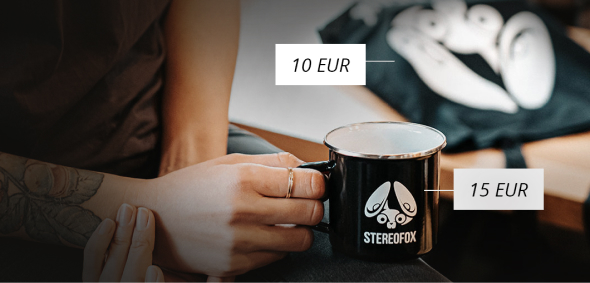With her roots in Japan and a home base in LA, SHIMA brings a uniquely refreshing voice to today’s electronic music landscape. We're transported to the bustling streets of Tokyo and into the serenity of its nature thanks to her splendid mixture of electronica, bass-influenced music, and traditional Japanese sounds. SHIMA's musical journey began in a J-Pop group back in Japan, an experience that taught her a lot about resilience and hard work. It's safe to say that by the time she made a solo shift into electronic music, she had already developed the discipline and creative drive needed to carve her own lane.
Her first release, "EIYAA" via TOKiMONSTA's iconic imprint Young Art, turned heads with its thunderous rhythm section and otherworldly layers. Furthermore, SHIMA's appeal is paired with a distinctive visual aesthetic, and this, along with her consistency, has had quite an impact on social media. This year, she gears up to release her debut album WELCOME TO SHIMAJIMA - a body of work that takes us through a range of genres, albeit with the adornment of Japanese influence. Throughout this interview, SHIMA opens up about her journey and the story behind the record.
The team and I also selected SHIMA as one of the 20 Rising Electronic Artists of 2025 to watch for at the start of the year.
For those just discovering you, how would you describe your evolution as an artist thus far?
I started off at the end of high school / beginning of middle school as a J-pop artist, but the music I was listening to privately (mostly indie electronica artists) was so vastly different from the extremely commercial pop style of music I was doing professionally, that the dissonance was really weighing on me. I felt like I was living a fake double life. My evolution ever since I ventured into my solo career has just been a slow but steady building of enough confidence and skill to close that gap between what I was putting out into the world, and what I really wanted to for myself, regardless of what would “sell” or make labels and managers happy.
Stay up to date.
New music and exclusive updates in your inbox weekly.
What were some of the moments you cherished about being in a J-Pop girl group? And looking back, what lasting lessons did you learn from that journey?
What I really gained out of being in that group was skill and experience. We were trained rigorously in singing, dancing, media etiquette, stage performance, etc. And being under a Japanese label and management, we were taught the importance of professionalism and hard work ethic, respect, and humility, which I carried with me throughout the rest of my career, not just in music but when I worked in corporate jobs as well.
When you first stepped into a solo career in the electronic space, what were some of the biggest challenges or fears you had to face?
Definitely gaining the confidence and self-trust to pursue the weird and unusual thing I want to pursue, instead of following convention. I didn’t trust my own instincts for a long time. That’s the one thing that I really lost from being in the J-pop industry for so long - they train you to follow instructions and never question authority, so you forget the value of your own artistry and instincts. I was so used to being given directions and being told exactly what to do by some man in a suit that it was scary at first going out on my own with nothing but my own internal compass to rely on, which I had been conditioned to believe was unreliable.
Why did you feel it was important for you to merge aspects of Japanese culture with your electronic sound?
It wasn’t necessarily a conscious decision, but something that just came naturally to me. I’ve always felt the most deeply moved by electronic music that incorporated organic instruments and sounds in some way. Modern Western pop music often has classical elements too, like a string section or a harp. But we don’t think of those as merging aspects of “European culture” into electronic sound.
What was going on in your life during the creation of your album WELCOME TO SHIMAJIMA?
I was really isolated that year, and nothing was really happening in my life professionally or personally. I barely left the house all year, which is why I was able to retreat into my little home studio and make the album without any outside noise or distractions.
There is quite a consistent theme of haziness and blur throughout the cover arts of the singles. How is this aesthetic related to the themes and narrative of the album?
After my first draft of the album was finished, I was searching all over the internet for a photographer who could capture in photos the moods & feelings I wanted to convey with audio, then I found Chiron Duong. His works are so ethereal and colorful, breathtakingly beautiful, and most importantly, you can really feel the love and respect he has for his Vietnamese culture through his works. He seamlessly blends elements of his traditional Vietnamese culture in a unique, modern, and abstract way that I’ve never seen before, and so his work feels fresh but timeless. I knew immediately that he was my “dream collab” and I saved all of his works on my moodboards without thinking there was any chance I could actually work with him. But I reached out to him anyway, not expecting a response, and a few months later, I was in Vietnam shooting with him. He and his team were so insanely warm, and the whole experience felt like a dream.
Which of your released singles carries the deepest emotional significance, and what’s the story behind it?
“Invisible” has the deepest emotional significance, and I think anyone who reads the lyrics who has also been through it will know exactly what I’m talking about. That’s all I’ll say.
How are you trying to make people feel, or what kind of space are you wanting to put people in after they've experienced WELCOME TO SHIMAJIMA?
I want people to feel empathy and hope. But this is not just after listening to the album – in general, I want more people to feel empathy and open-mindedness towards other cultures and peoples who are different from us.
What was it about TOKiMONSTA's Young Art label that made you feel it was the perfect home for your music and artistic vision?
Earlier, when I mentioned that the music I admired privately in high school was very different from the music we were putting out under the J-pop group – well, that happened to be Flying Lotus, Teebs, Thundercat, TOKiMONSTA, and that whole genre of experimental electronica beats. So when the offer came from her label, run by the very same artist I had looked up to as a teen, it was a no-brainer.
It's great that you're quite active on social media and you keep your audience engaged. What do you want people to understand about you from a first glance at your page, and how do you do that?
I actually hadn’t really thought of that before. I’m actually working on trying to be more open and honest on social media, and let people see who I really am and know what I really think. I have a lot of strong opinions that I’ve been discouraged from sharing in the past. I don’t think I’m there yet, but the goal is to make my platform a place of education. Education on different cultures, ideologies, and ways of thinking outside of just music. I’m a huge geopolitics and world events nerd, and I see music as a way of bringing awareness to more important things in life, like wars and genocides, that people in the West and developed countries have gotten way too comfortable ignoring.
What would you say matters more to you than success in the music industry?
A successful music career is just a means to an end, not the end in and of itself. The ultimate goal of growing a platform is so that you can stand on that platform and point people’s attention towards the more important things that are happening in the world. Like Kourtney Kardashian once said, “Kim, there’s people that are dying.” We get so lost in building the platform that a lot of us forget why we even started building it in the first place.








